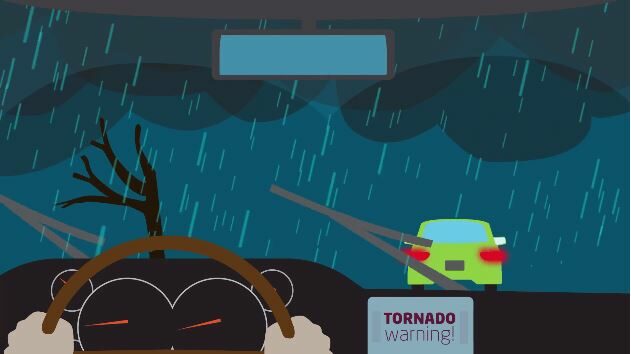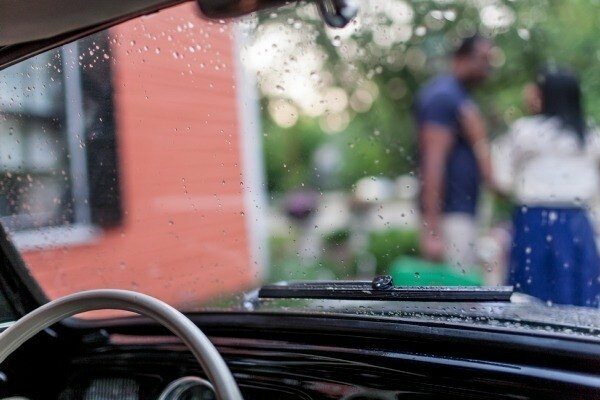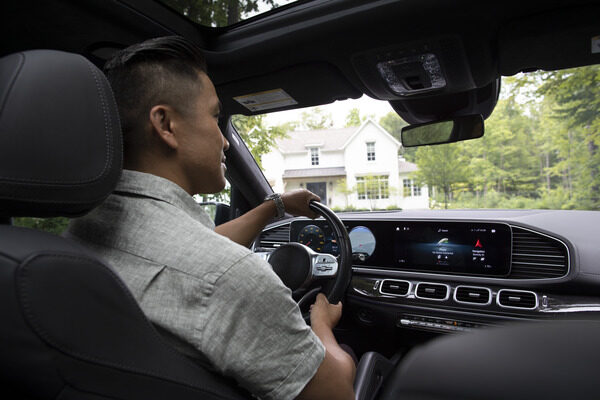
Whether you’re a new driver or an experienced one, driving in bad weather is still stressful. You may actually stay safer on the road by knowing some basics about driving in inclement weather. Check out this short video and read below for tips on driving in bad weather.
How to drive safely in blizzards, floods and other major storms
When extreme weather strikes, you’re more vulnerable inside a vehicle than anywhere else. According to the Federal Highway Administration, car accidents/incidents account for the most weather-related deaths, with more than 7,000 Americans dying on average every year due to wrecks.
This means you can never exercise too much caution, especially if you’re expecting to drive under adverse circumstances. For starters, it’s key to prepare before bad weather hits. Try to rearrange plans so you don’t have to drive. If you must drive in extreme weather, get the latest updates on road conditions and the storm. Let family members and/or a loved one know what your travel plans are, including your intended route and anticipated arrival time. Test windshield wipers before you leave.
Always pack an emergency kit which includes the following: fully charged cell phone, first aid kit, a blanket, booster cable, flares and/or neon distress signs, a flashlight, bottled water and healthful snacks (such as dried fruit, nutrition bars and almonds). Turn on headlights (low beams) in any hazardous weather.
To find out more about driving during four major weather disasters — blizzards, tornadoes, floods and hail — we compiled the following advice from such authorities as the Federal Emergency Management Agency (FEMA), the National Oceanic and Atmospheric Administration (NOAA) and Consumer Reports.
Blizzards.
Pack rock salt and sand in your vehicle, as well as snow shovels. You should also include additional layers of clothing and/or blankets in case you get stranded. Keep insulated gloves and windshield scrapers with you.
If you’re trapped on the road due to a blizzard, pull off the highway, turn on your hazard lights and hang a distress flag (such as a rag) from the antenna or a window. If there’s no nearby available shelter, stay in the car instead of going out on foot trying to find someone.
Run the engine/heater ten minutes on the hour to stay warm, but open a downwind window to allow ventilation. Clear snow from the exhaust periodically. Turn on the inside light at night so rescuers can see you.
Tornadoes.
Look for the warning signs, which include large hail, a low-flying cloud, a dark, often greenish sky and a loud roar that is often described as sounding like a freight train. If this is the case, try to get to the closest, sturdy shelter. But if you’re in an urban or congested area, do not try to “outrun” the tornado.
One recommended option involves relocating to a low, flat location. Do not park under an underpass or bridge. Once the location is reached, stay in the car, buckle up, put your head down below the windows and cover up with a blanket, coat or cushion.
Another option, if available, is to see if you can get to a location on foot that’s noticeably lower than the level of the roadway. If so, leave the car and lie down there, covering your head with your hands. Watch out for flying debris, as this causes the most fatalities/injuries.
Floods.
Do not drive around barricades — they’re there for your protection. Never attempt to drive through a flooded road, because the depth of water isn’t obvious and the road may be washed out.
Many motorists are unaware of how easy it is to run into trouble during a flood. Just six inches of water will reach the bottom of most cars, causing loss of control and possible stalling. A foot of water can float a vehicle, and two feet will carry one away.
If floodwaters rise around your car, abandon it and move to higher ground if you can do so safely. Never park along streams, rivers or creeks.
Hail.
Allow plenty of distance for braking. During severe hail, pull safely onto the shoulder of the road, or a sturdy garage and/or shelter with enough cover to minimize damage to you and your vehicle. Stay away from downed power lines. Approach intersections with caution. Treat blinking traffic lights at intersections as four-way stops.
After the storm, if your windows are broken, carefully remove any glass from your interior, and seal the damaged area to prevent interior water damage.
After taking into account all of these driving tips in extreme conditions, ask yourself: do you practice these 9 safe driving habits?



